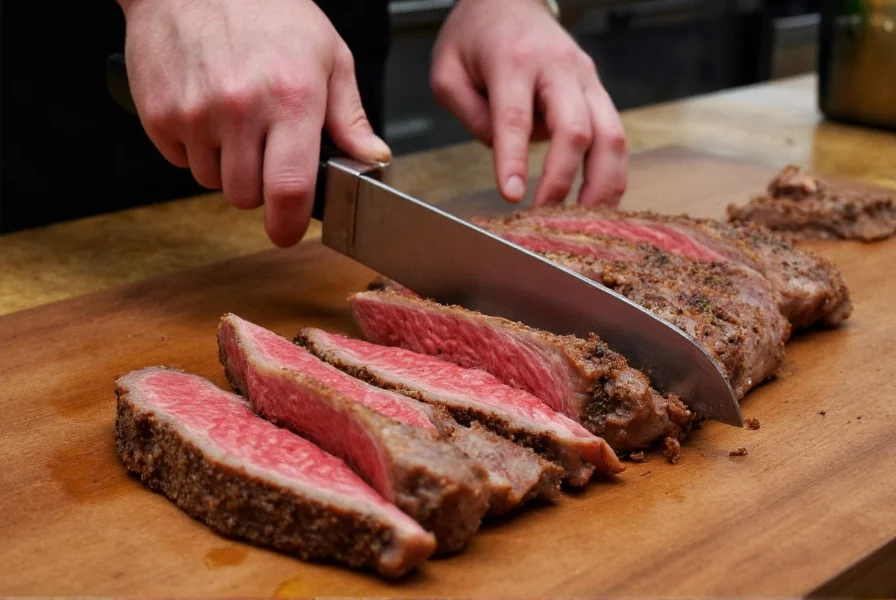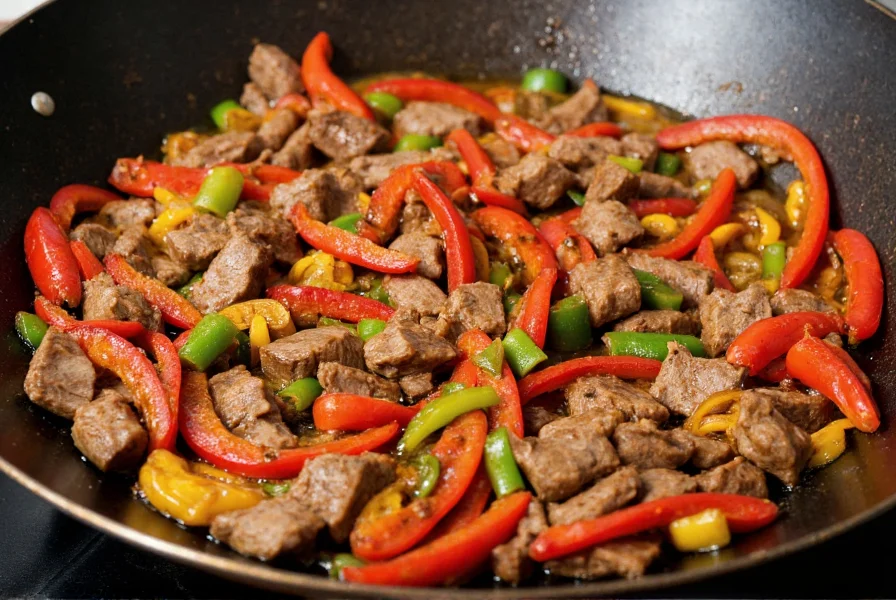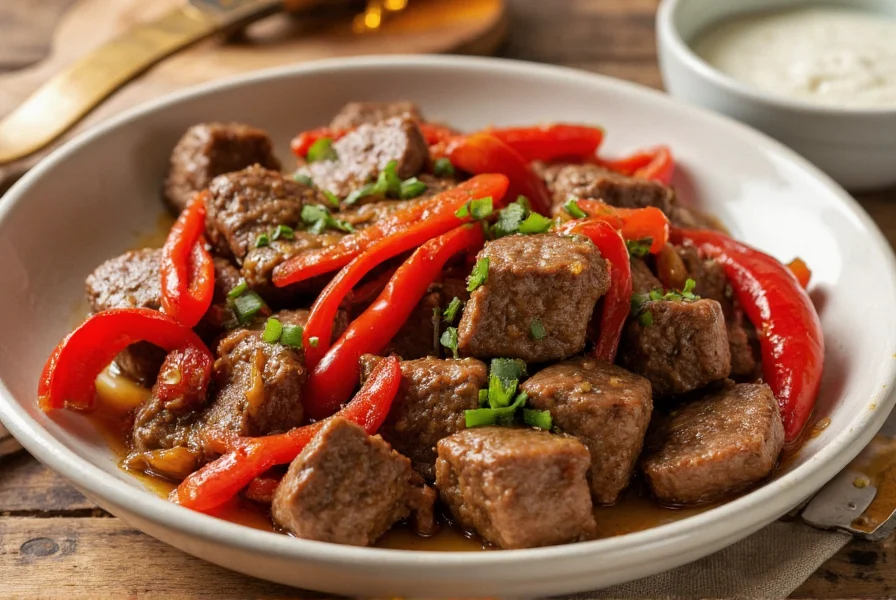Mastering steak and pepper stir fry requires understanding both technique and ingredient synergy. This beloved Chinese-American dish balances tender protein with vibrant vegetables in a glossy sauce that clings perfectly to each component. Unlike many takeout versions loaded with sodium and oil, the homemade version offers better texture control and customizable flavors while maintaining the dish's signature wok hei (breath of the wok) essence.
Essential Components for Authentic Flavor
Creating restaurant-quality steak and pepper stir fry at home starts with selecting the right ingredients. The magic happens through three critical elements working in harmony: the protein preparation, vegetable selection, and sauce formulation.
| Ingredient Category | Recommended Options | Avoid |
|---|---|---|
| Beef Cut | Flank steak, sirloin, ribeye | Round steak, chuck roast |
| Peppers | Red, yellow, and green bell peppers | Jalapeños (unless adding heat) |
| Sauce Base | Fresh garlic, ginger, low-sodium soy sauce | Bottled stir-fry sauces with preservatives |
Proper Beef Preparation Techniques
The secret to tender steak in stir fry begins before cooking. Slice flank steak against the grain into ¼-inch strips—this shortens muscle fibers for maximum tenderness. For optimal results when making quick steak and pepper stir fry at home, marinate the beef for 15-30 minutes in:
- 1 tablespoon soy sauce
- 1 teaspoon cornstarch
- 1 teaspoon Shaoxing wine (or dry sherry)
- ½ teaspoon sesame oil
This simple marinade creates a protective layer that seals in juices during high-heat cooking. Many home cooks make the mistake of overcrowding the pan, which lowers the temperature and causes the beef to stew rather than sear. For best results when preparing steak and pepper stir fry, cook in two batches using high smoke-point oil like peanut or avocado oil.

Perfect Stir Fry Sauce Formula
The ideal steak and pepper stir fry sauce balances咸 (xián—salty), 甜 (tián—sweet), and 鲜 (xiān—umami) elements. This restaurant-style stir fry sauce recipe yields enough for 4 servings:
- 3 tablespoons low-sodium soy sauce
- 2 tablespoons oyster sauce
- 1 tablespoon rice vinegar
- 1 tablespoon brown sugar
- 1 teaspoon sesame oil
- 2 cloves garlic, minced
- 1 tablespoon fresh ginger, grated
- 1½ tablespoons cornstarch
- ¼ cup beef broth
Mix all ingredients except cornstarch slurry in a bowl. In a separate container, combine cornstarch with broth to create the slurry. The cornstarch-to-liquid ratio is critical for proper thickening—too little creates a watery sauce, while too much results in gloopy texture. This precise steak and pepper stir fry sauce ratio ensures glossy, clingy consistency without overpowering the natural beef flavor.
Step-by-Step Cooking Process
Follow these professional techniques for perfect steak and pepper stir fry every time:
- Prep all ingredients before heating the wok (mise en place)—stir frying happens too quickly to chop while cooking
- Heat wok until smoking (450-500°F), then add 1½ tablespoons high smoke-point oil
- Cook beef in batches, 60-90 seconds per batch until browned but not fully cooked
- Remove beef and set aside while cooking vegetables
- Stir fry peppers and onions for 2-3 minutes until crisp-tender
- Return beef to wok, pour in sauce, and toss for 60-90 seconds until glossy
- Finish with sesame seeds and serve immediately over jasmine rice
The entire cooking process should take no longer than 5 minutes once ingredients hit the wok. This timing ensures vegetables maintain their vibrant color and crisp texture while the sauce properly thickens and coats each ingredient—a hallmark of properly executed steak and pepper stir fry.

Common Mistakes to Avoid
Even experienced home cooks make these critical errors when attempting steak and pepper stir fry recipe:
- Using cold ingredients—bring everything to room temperature first to ensure even cooking
- Over-marinating beef—more than 30 minutes makes meat mushy due to acid in marinade
- Adding sauce too early—wait until vegetables are nearly done before introducing liquid
- Using low heat—proper stir frying requires maximum heat to achieve wok hei
- Overcrowding the pan—cook in batches for proper searing
Variations and Adaptations
While traditional steak and pepper stir fry uses bell peppers, creative adaptations include:
- Szechuan style: Add dried chilies and Szechuan peppercorns for numbing heat
- Hong Kong style: Incorporate black bean sauce and water chestnuts
- Low-carb version: Substitute cauliflower rice and increase vegetable ratio
- Gluten-free adaptation: Use tamari instead of soy sauce and verify oyster sauce is GF
For those seeking the best cut of meat for stir fry, flank steak remains ideal, but filet mignon offers luxurious tenderness for special occasions. When preparing quick steak and pepper stir fry for weeknight dinners, sirloin provides excellent value while maintaining good texture.
Serving and Storage Recommendations
Steak and pepper stir fry is best served immediately while hot. The residual heat continues cooking the ingredients, so remove from heat just before reaching desired doneness. Pair with steamed jasmine rice or noodles for a complete meal.
For meal prep enthusiasts learning how to make restaurant-style stir fry at home, proper storage maintains quality:
- Refrigeration: Store in airtight container for up to 3 days
- Reheating: Use wok or skillet with teaspoon of water to revive texture
- Avoid microwaving—this makes beef tough and vegetables soggy
- Freezing: Not recommended as peppers become watery upon thawing
Frequently Asked Questions
What's the best cut of steak for stir fry?
Flank steak is ideal for steak and pepper stir fry due to its rich beef flavor and ability to remain tender when sliced properly against the grain. Sirloin and ribeye also work well, but avoid tougher cuts like round steak which don't respond well to quick cooking methods.
Why does my stir fry turn out soggy?
Sogginess occurs when the wok temperature drops too low, usually from overcrowding the pan or adding cold ingredients. Cook in batches, ensure your wok is properly preheated until smoking, and pat ingredients dry before cooking. The entire process should happen quickly at high heat to achieve proper sear rather than steam.
Can I make steak and pepper stir fry without a wok?
Yes, a cast-iron skillet or heavy-bottomed stainless steel pan works well as an alternative. The key is using a pan that can withstand high heat and has enough surface area to prevent overcrowding. Avoid non-stick pans as they can't reach the necessary temperatures for proper stir frying.
How do I prevent my beef from becoming tough?
Slice against the grain into thin strips, marinate with cornstarch, and cook quickly over high heat. Remove beef from the wok when 75% cooked, as residual heat will continue the process. Overcooking is the primary cause of tough steak in stir fry—beef should spend no more than 90 seconds per batch in the hot wok.
What gives stir fry its distinctive restaurant flavor?
The characteristic restaurant flavor comes from wok hei (breath of the wok)—achieved through extremely high heat that creates subtle caramelization and smokiness. Professional kitchens use powerful burners that home stoves can't match, but you can approximate this by preheating your wok until smoking, using minimal oil, and working quickly to develop fond (browned bits) that incorporates into the sauce.











 浙公网安备
33010002000092号
浙公网安备
33010002000092号 浙B2-20120091-4
浙B2-20120091-4